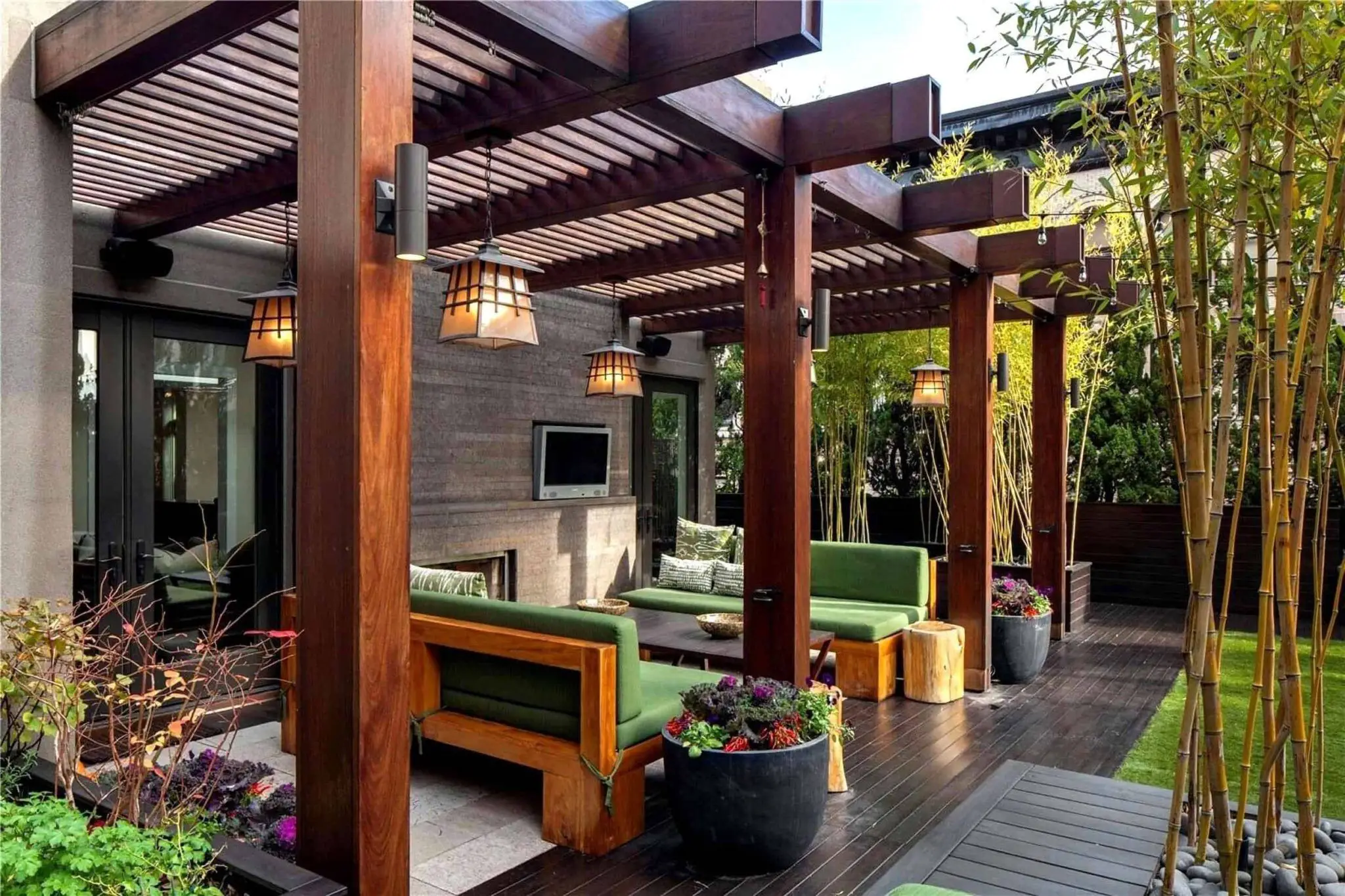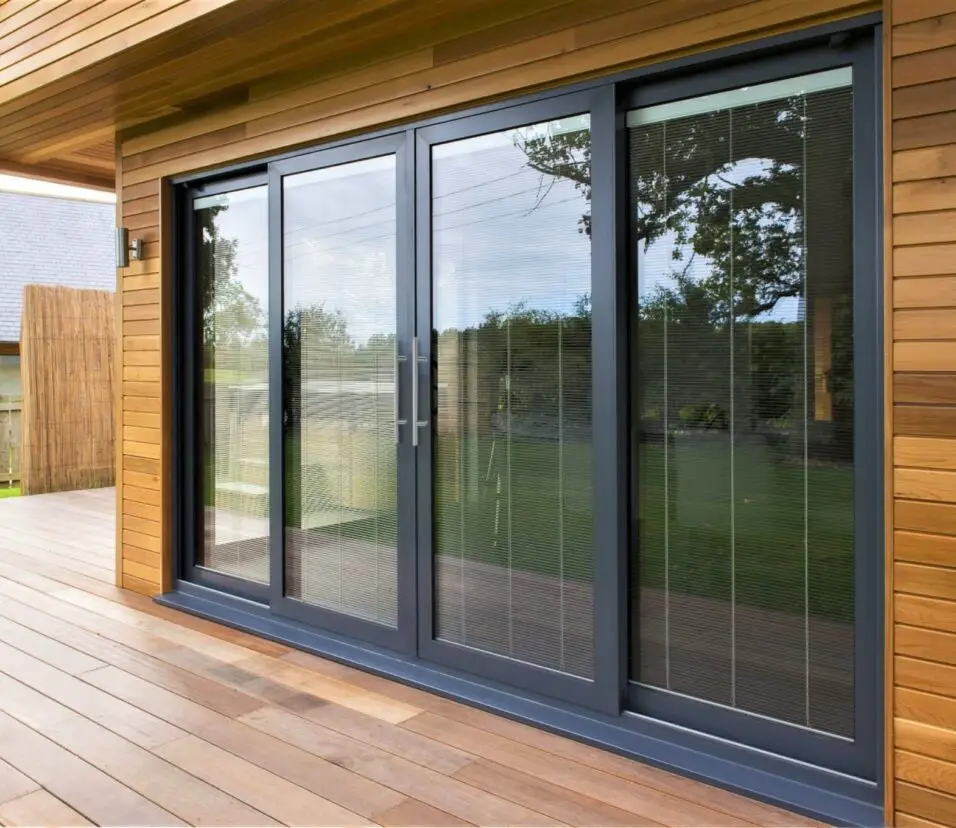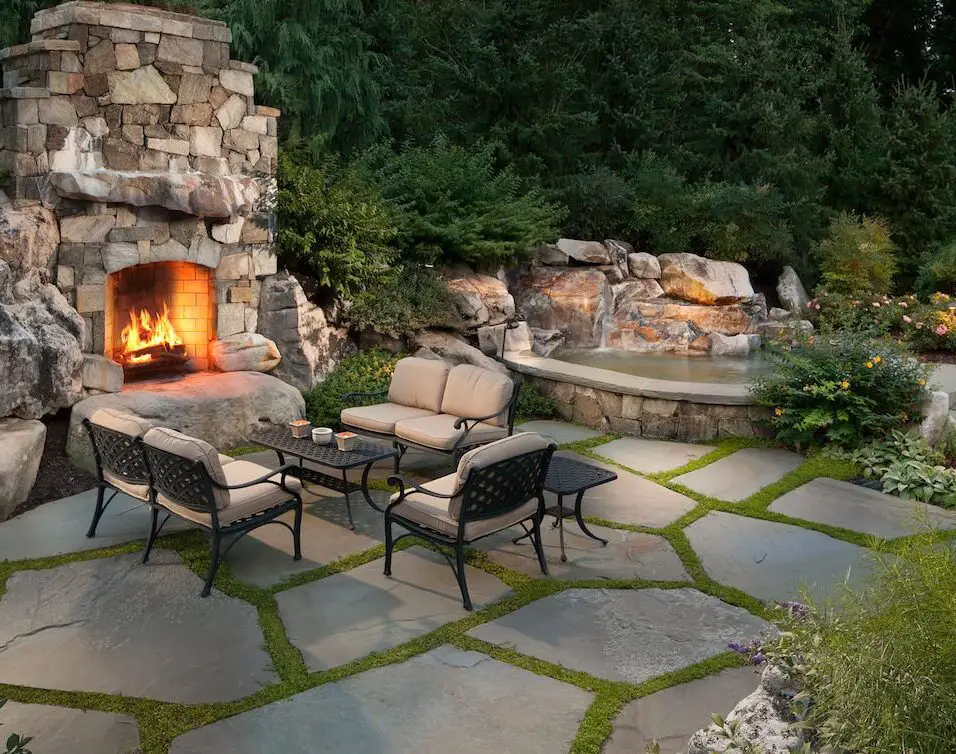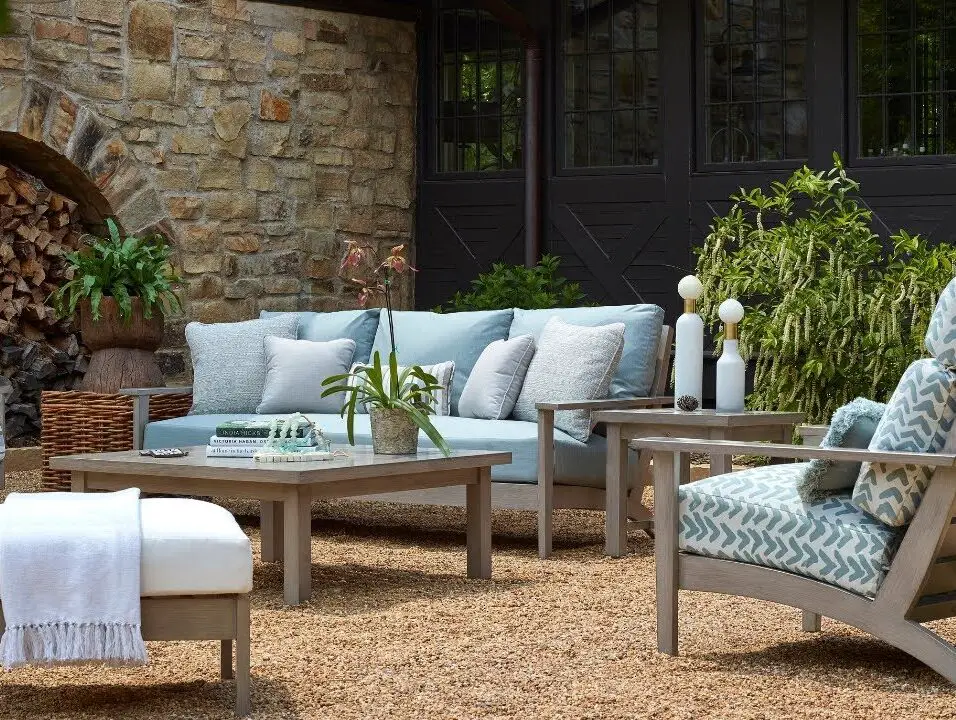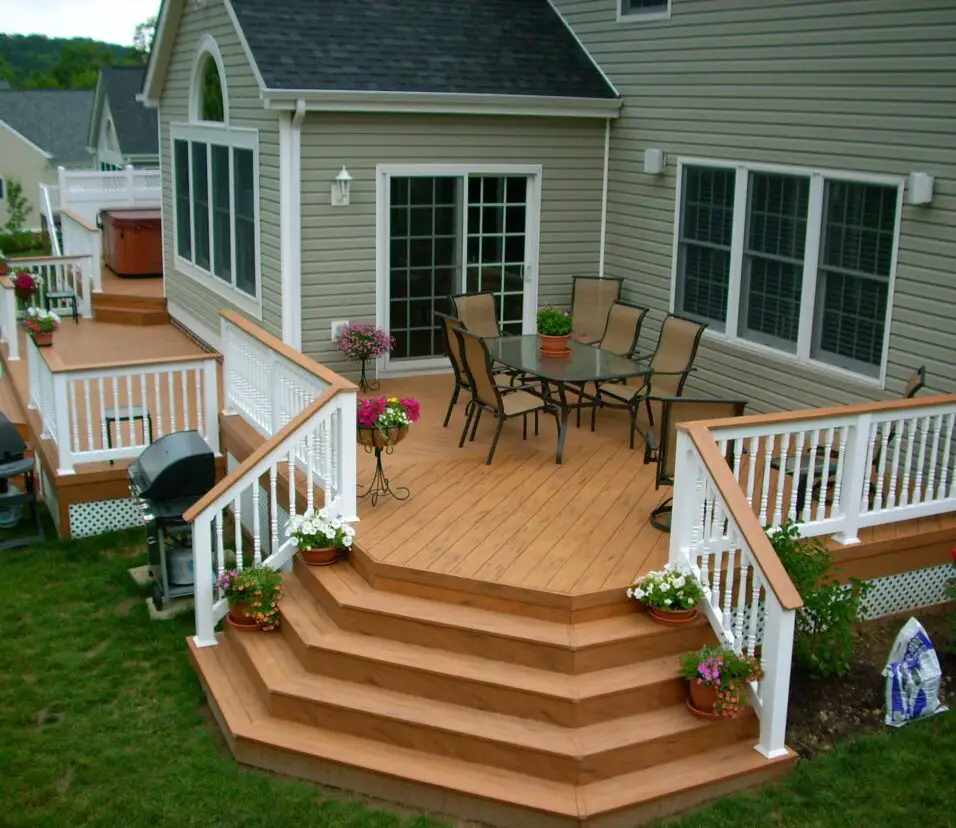How To Attach A Patio Roof To An Existing House
Introduction
How To Attach A Patio Roof To An Existing House: Before you start any construction, it’s crucial to inspect your home’s structure and determine if it can support the additional weight of a patio roof. Additionally, check local building codes and regulations to ensure your project complies with safety standards and zoning requirements. There are various patio roof designs to choose from, such as pergolas, gable roofs, or flat roofs. Consider factors like aesthetics, climate, and how you plan to use the space to make an informed decision.
Once you have a design in mind, compile a list of necessary materials and tools. Common materials include lumber, roofing materials, fasteners, and concrete for footings. Having the right tools, such as a saw, hammer, drill, and level, will make the construction process smoother. Plan out the dimensions and layout of your patio roof, marking precise attachment points on the existing house and the ground. A well-thought-out plan will minimize errors during the construction phase.
Sturdy support is essential for the stability of your patio roof. Learn how to attach support beams to the existing house securely and install posts to bear the weight of the roof. Choose appropriate roofing materials that suit your climate and match your home’s style. Properly waterproofing the roof will protect your patio furniture and home from leaks and water damage. Depending on your preferences, you may want to incorporate additional features like lighting, ceiling fans, or retractable awnings to enhance your patio’s functionality and aesthetics.
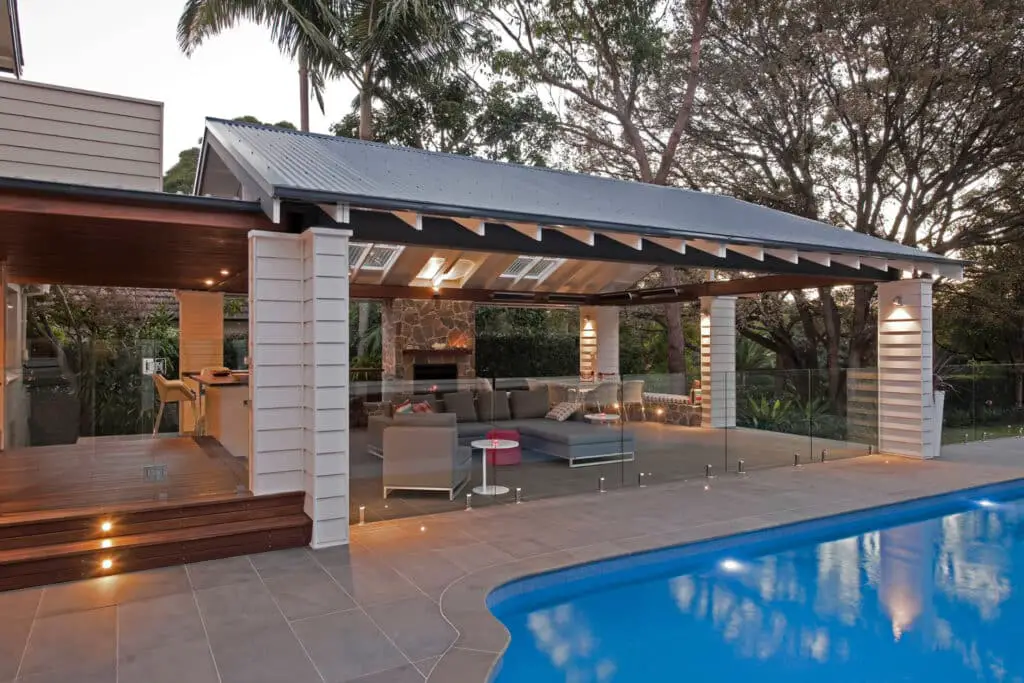
Can you build a patio on your roof?
Roof deck systems are a great way to add extra living space to your client’s commercial property. They can be used for many different purposes, such as a patio, entertainment area or even a garden. Roof decks are also a great way to increase the revenue of your property and increase overall building use.
Assessing Feasibility
Before diving into the design and construction process, it’s crucial to assess the feasibility of a rooftop patio. Consult with a professional structural engineer or contractor to evaluate if your building can support the additional weight of a patio, furniture, and potential foot traffic. The structural integrity of the roof and its ability to handle the extra load are paramount to ensure safety.
Obtaining Permissions and Permits
Building a rooftop patio usually involves navigating complex city regulations and building codes. Check with your local authorities to obtain the necessary permits and approvals. This step is essential to avoid potential legal issues and ensure your rooftop patio meets all safety and zoning requirements.
Designing the Rooftop Patio
The design of your rooftop patio will largely depend on available space, your vision, and the intended purpose. Consider factors like privacy, sun exposure, wind, and noise levels. From modern and minimalistic to lush and green, your design choices can create a harmonious outdoor sanctuary.
Waterproofing and Drainage
One of the most critical aspects of a rooftop patio is waterproofing. Since it is exposed to the elements, ensuring proper waterproofing and drainage systems is vital to prevent leaks and water damage. Consult with experts to select appropriate waterproofing materials and techniques for your rooftop.
What is a patio roof called?
The word pergola has come to be used interchangeably with patio cover. Patio cover. An attached structure that provides shade and/or rain coverage for a patio or deck. A patio cover may have an open or solid roof. The term patio cover is often used interchangeably with pergola.
Pergola: A pergola is an open outdoor structure consisting of vertical posts or pillars that support cross-beams and an open lattice roof. It provides partial shade while allowing sunlight and air to pass through. Pergolas are a popular choice for their aesthetic appeal and ability to define an outdoor space without completely enclosing it.
Gazebo: A gazebo is a freestanding, octagonal or circular structure with a solid roof and open sides. It often features railings and may be screened to protect against insects. Gazebos are ideal for creating a focal point in a garden or providing a sheltered space for relaxation and outdoor dining.
Awning: An awning is a retractable or fixed roof-like covering attached to the exterior wall of a building, usually above windows, doors, or a patio area. It offers shade and protection from rain while maintaining flexibility with its retractable feature. Awnings come in various materials, including fabric, metal, or polycarbonate.
Veranda: A veranda is an extended, roofed, and open platform, often covered with a roof that extends from the main building’s structure. It typically runs along the front or side of a house and is used for outdoor seating and entertainment. Verandas offer a spacious and inviting extension of indoor living areas.
Can you walk on patio roof?
Can I walk on my patio roof? Where possible, I would highly recommend avoiding walking on your patio roof. The reason I say this is that unlike the roof of your house, patio structures and roof sheets are not built to withstand a lot of weight, or in this case the weight of a human.
Roof Design and Materials
The design of the patio roof plays a crucial role in determining its load-bearing capacity. Some patio roofs, such as pergolas or awnings with open lattice structures, are not designed to support the weight of individuals walking on them. These roofs are primarily meant to provide shade and support lightweight coverings like fabric or vines.
On the other hand, solid roof structures, such as those found in enclosed sunrooms or certain types of gazebos, are generally designed to support walking and even furniture loads. These roofs are usually constructed with stronger materials capable of handling additional weight.
Load-Bearing Capacity
The load-bearing capacity of a patio roof is determined during the design and construction phase. Professional engineers or architects assess the structural integrity of the roof and ensure it can withstand expected loads, including weather conditions like snow accumulation or heavy rain. For roofs designed to bear weight, the load capacity must be clearly specified and adhered to.
Safety Concerns
Walking on a patio roof that is not designed for it can lead to severe accidents, damage to the roof, or even structural failure. Open lattice patio roofs, for example, lack the necessary support for safe walking. Attempting to walk on such a roof can result in falling through, leading to injuries and potential legal liabilities.
Regular Maintenance
Even if a patio roof is designed for walking, it’s essential to maintain the structure regularly. Inspect the roof for any signs of damage, deterioration, or weak spots. Loose or damaged materials may compromise the roof’s integrity, making it unsafe for walking. For built-up or single-ply membrane roofing, such as modified bitumen or TPO, the minimum slope is usually 1/4 inch per foot (2% slope) or slightly higher. These roofing materials are more susceptible to water penetration, so a steeper slope helps ensure effective drainage. Whether you opt for a charming pergola, a classic gable roof, or a sleek flat roof, your new patio cover will undoubtedly add value and appeal to your property.
How high can a patio roof be?
The height of a patio cover is based on the required clearance of other structures, and on the size of the area over which you want to build the patio cover. This can range between 2.4m and 3m in height.
Local Building Codes and Zoning Regulations
The height restrictions for patio roofs are often governed by local building codes and zoning regulations. These regulations vary depending on your location and may dictate the maximum height allowed for structures, including patio roofs. Some areas might have strict height limitations to maintain uniformity and prevent obstruction of views or sunlight to neighboring properties.
Roof Design and Slope
The design and slope of the patio roof play a significant role in determining its height. Flat or low-sloped roofs typically have lower profiles and might comply better with height restrictions. On the other hand, steeply pitched roofs may allow for more headroom but could approach height limitations more quickly.
Clearance and Safety
Consider the practicality of the height in terms of clearance and safety. Ensure the patio roof provides adequate headroom for people using the space comfortably. Additionally, if the patio roof is adjacent to a doorway or window, ensure there is sufficient clearance to prevent any potential obstructions.
Architectural Style and Aesthetics
The height of the patio roof should complement the architectural style of the house and the overall aesthetics of the outdoor space. A roof that harmonizes with the home’s design can enhance its visual appeal and add value to the property.
How long does patio roof last?
Most insulated patio roofs have a lifespan of 15-20 years, depending on the materials used and the quality of installation and maintenance.
Wood Patio Roofs
Wood is a popular material for patio roofs due to its natural beauty and versatility. However, wood is susceptible to weathering, rot, and insect damage over time. Treated wood or naturally durable species like cedar or redwood can extend the lifespan of a wood patio roof. With proper maintenance, including regular staining or sealing and addressing any signs of decay promptly, a well-constructed wood patio roof can last around 15 to 20 years.
Metal Patio Roofs
Metal roofs, such as aluminum or steel, are highly durable and resistant to weathering, rust, and insects. They can withstand harsh environmental conditions and have a longer lifespan compared to wood roofs. A well-maintained metal patio roof can last 20 to 30 years or more.
Polycarbonate Patio Roofs
Polycarbonate panels are lightweight and offer excellent UV protection. These panels can be used to create transparent or translucent patio roofs, providing shade while allowing natural light to filter through. Properly installed polycarbonate patio roofs can last around 10 to 20 years, depending on the quality of the panels and their exposure to the elements.
Fiberglass Patio Roofs
Fiberglass is a durable and lightweight material commonly used for patio roofs. Panels are resistant to UV rays and can provide long-lasting protection. With regular maintenance, including cleaning and inspection for damage, a fiberglass patio roof can last around 20 to 25 years.
What is the best type of patio roofing?
Aluminum patio covers are one of the most durable materials, as they are designed to last for many years with minimal maintenance. They are lightweight, easy to install, and fire and corrosion-resistant, making them one of the best choices for homeowners looking for an attractive and long-lasting patio cover.
Polycarbonate Patio Roofing
Polycarbonate panels are lightweight, shatter-resistant, and provide excellent UV protection. They are often used in translucent or transparent styles to allow natural light while providing shade. Polycarbonate patio roofs are easy to install and relatively affordable. With proper maintenance, they can last around 10 to 20 years.
Fiberglass Patio Roofing
Fiberglass roofing is durable, lightweight, and offers good UV resistance. It comes in panels or shingles and is available in various colors. Fiberglass patio roofs can last around 20 to 25 years with proper care and maintenance.
Wood Patio Roofing
Wood patio roofs, particularly those made from naturally durable species like cedar or redwood, have a classic and rustic appeal. They offer a warm and inviting ambiance to outdoor spaces. Treated wood can also increase resistance to decay and insects. Properly maintained wood roofs can last around 15 to 20 years.
Pergolas
Pergolas are open structures with cross-beams and an open lattice roof. They offer partial shade and can be constructed from wood, vinyl, or metal. Pergolas are versatile and can be customized to suit various design styles. However, they do not provide full protection from the elements and are best suited for areas with mild weather conditions.
What is the minimum slope for a patio roof?
Slope is a ratio of inches per foot, the minimum slope is 1/4″ per foot and the maximum slope is 1″ per foot, the maximum slope is the most the cover can be pitched and the roof panels maintain a proper contact with the hanger and beam.
Metal Patio Roofing
For metal patio roofs, including aluminum and steel, the minimum slope is typically around 1/4 inch per foot (2% slope). This slight slope is sufficient for water to flow off the roof and prevent standing water. Metal roofs are relatively smooth and allow water to run off easily.
Polycarbonate and fiberglass panels are lightweight and have some flexibility, making them suitable for lower slopes. The minimum recommended slope for these materials is also around 1/4 inch per foot (2% slope) to ensure proper drainage.
Built-Up or Single-Ply Membrane Roofing
For built-up or single-ply membrane roofing, such as modified bitumen or TPO, the minimum slope is usually 1/4 inch per foot (2% slope) or slightly higher. These roofing materials are more susceptible to water penetration, so a steeper slope helps ensure effective drainage. Whether you opt for a charming pergola, a classic gable roof, or a sleek flat roof, your new patio cover will undoubtedly add value and appeal to your property.
If you have a shingled patio roof, the minimum slope is typically higher, around 3 inches per foot (25% slope) or more. Asphalt shingles have a rougher surface, which requires a steeper slope to allow water to flow freely.
How thick is a patio roof?
Roofs range from 3” to 6” thick with1 1/2# or 2# density EPS (expanded polystyrene) depending on your building code requirements. Roofs are thick gauge stucco-embossed aluminum protected by Krystal Kote® finish to prevent scratches and discoloration.
Metal roofing materials, such as aluminum or steel, come in various gauges, which determine their thickness. The thickness of metal panels used for patio roofs can range from 22 to 29 gauge, with lower gauge numbers indicating thicker panels. For example, a 22-gauge metal panel is approximately 0.0299 inches (0.76 mm) thick, while a 29-gauge panel is about 0.0142 inches (0.36 mm) thick.
Polycarbonate panels used for patio roofs are available in different thicknesses, typically ranging from 8mm to 25mm. The thickness affects the panel’s strength, insulation properties, and light transmission. Thicker panels provide better insulation but may reduce the amount of natural light that filters through.
Fiberglass roofing panels are typically available in thicknesses ranging from 0.5mm to 3mm. The thickness affects the panel’s durability and resistance to weathering and impacts. For built-up or single-ply membrane roofing, such as modified bitumen or TPO, the minimum slope is usually 1/4 inch per foot (2% slope) or slightly higher. These roofing materials are more susceptible to water penetration, so a steeper slope helps ensure effective drainage. Whether you opt for a charming pergola, a classic gable roof, or a sleek flat roof, your new patio cover will undoubtedly add value and appeal to your property.
For built-up or single-ply membrane roofing systems, the thickness can vary based on the number of layers and the type of membrane used. These roofs can have total thicknesses ranging from 0.05 inches (1.27 mm) to over 1 inch (25.4 mm).
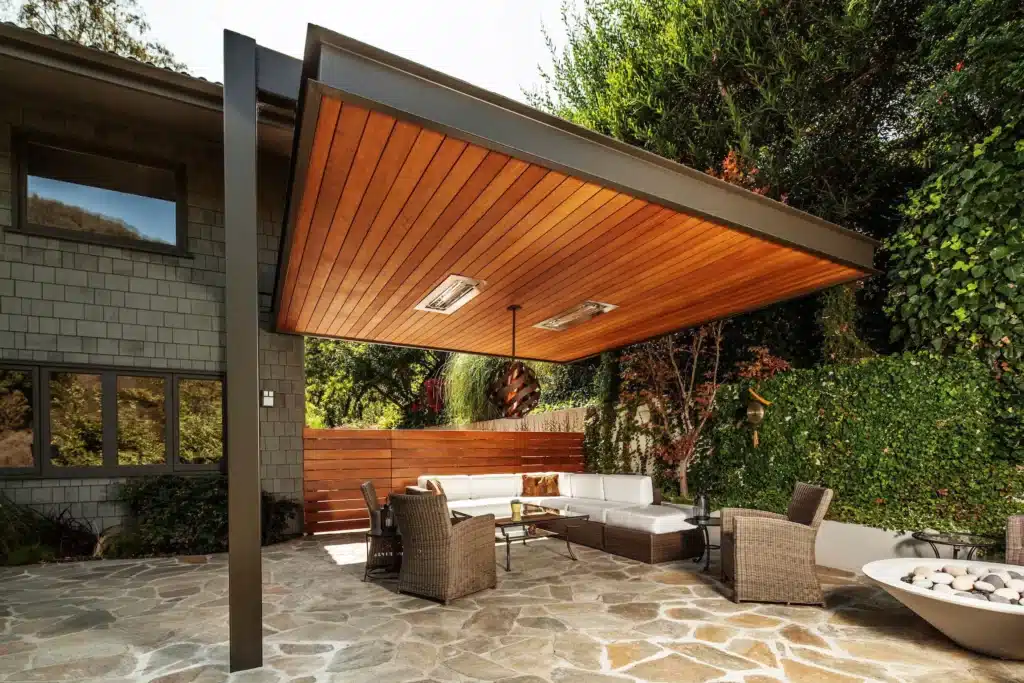
Conclusion
Remember, safety is paramount throughout the construction process. Double-check that your home’s structure can handle the additional load, and always adhere to local building codes and regulations. Taking these precautions will ensure the longevity and stability of your patio roof. As you put the finishing touches on your patio roof, envision the countless memories you’ll create in this beautiful outdoor space.
As you embark on this project, consider your individual needs and preferences. The design and materials you choose should complement your home’s architecture and cater to your lifestyle. Whether you opt for a charming pergola, a classic gable roof, or a sleek flat roof, your new patio cover will undoubtedly add value and appeal to your property. From relaxing afternoons basking in the shade to hosting memorable gatherings with friends and family, your new patio will become a cherished extension of your home.
Be meticulous in your planning and measurements, as accuracy is key to a successful build. Precisely attaching support beams, securing posts, and weatherproofing the roof will contribute to a durable and reliable structure that stands the test of time. If you encounter any uncertainties or challenges, don’t hesitate to seek assistance from a professional contractor. Their expertise can offer valuable insights and ensure your patio roof is crafted to the highest standards.



